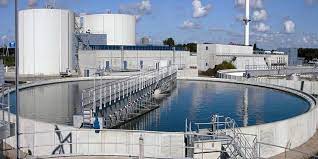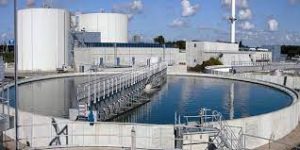How Is An Effluent Treatment Plant Useful For The Textile Industry?
How Is An Effluent Treatment Plant Useful For The Textile Industry?


An effluent treatment plant, or ETP, aims to provide clean water to the environment while protecting it from the looming consequences of the wealthy. ETPs are a particular kind of wastewater treatment facility that unquestionably needs to clean up current wastewater for reuse. Depending on the company, modern Industrial Effluents comprise a number of different chemicals. Oil and oil are present in certain modern effluents, whereas dangerous elements are present in others. When regular decomposable pollutants are available, handling plants can handle the effluents from the food and beverage industry. Since conventional wastewater treatment methods involve a number of hazardous chemicals, it is necessary to use an exclusive treatment method known as ETP.
Wastewater Treatment Plant for the Processing Sector
Almost all manufacturing processes require access to water. Water, which in the current world contains both dangerous and non-poisonous compounds, was produced via compound cycles. Contemporary wastewater systems may be cleaned by a modern Wastewater Treatment System using a streamlined cycle so that they can be recycled, reused, or discarded. Mobile and flexible water filtration systems are available. Different treatment facilities handle wastewater from different businesses. In terms of aesthetic quality, the quantity of wastewater generated by printing, dyeing, and other procedures employed in the textile business varies substantially. The area’s water and soil are contaminated by the textile industry’s discharge of untreated effluent, which has a detrimental effect.
Treatment Options for Modern Effluents
- Modern emanating should be processed before distribution since it contains hazardous and difficult-to-corrupt synthetic components. There are numerous ways to remediate wastewater nowadays.
- It is feasible for organic medications to have anaerobic or high-impact qualities.
- Vacuum evaporators use a variety of modern, Industrial Wastewater Treatment Systems and come in a number of sizes.
- Physical-synthetic treatment: This technique tackles various contaminations with a network of connected devices.
The Modern Water Treatment Process Throughout Sequence
In order to improve oxidation or fine filtration, organizations must keep these contaminants under control at all times. There could be millions or billions of contaminants. Each of these procedures cleaned the water as it went through them, removing contaminants from the water.
- The process also eliminates drifting materials like leaves, papers, and clothing in addition to settleable inorganic particles including sand, framework, fats, oils, and lubricants. The amount of Wastewater Treatment Solution produced by printing, dyeing, and other processes used in the textile industry varies significantly in terms of aesthetic quality. The discharge of untreated effluent from the textile sector, which has a serious negative impact, contaminates the area’s water and soil.
- Sedimentation, often known as settling, is the primary method of water treatment. Sedimentation occurs twice during the conventional sewage treatment process: once before auxiliary treatment and once after optional treatment. Synthetic precipitation, also known as coagulation-supported sedimentation, is the use of chemical coagulants to aid or enhance sedimentation.
- Tertiary wastewater treatment makes it possible to dispose of the sewage that remains after optional treatment without it becoming a nuisance. Due to its high price, it might be used in extraordinary circumstances.

Industrial Water Treatment’s Basic Intention
Making water reusable and safe for human consumption is the fundamental objective of Wastewater Treatment Plants. By reusing treated water in various production processes, businesses can make money. Along with chemical components, water also transports a wide range of wastes. The water that businesses discharge into the environment contains dangerous chemicals. Leaving it out in the open is fatal. Industrial Wastewater Treatment Systems will remove harmful elements and chemical additions from the water. Industrial wastewater must be adequately treated in order to prevent the growth of bacteria that can harm trees, plants, and animals if it is not. In order to stop pollution, we have invested millions of rupees in environmental projects in India.




